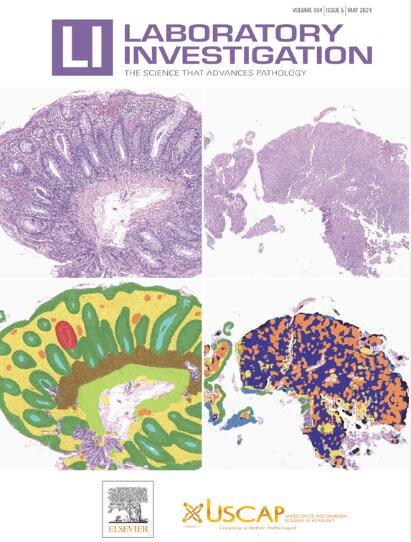Microsatellite-Stable Gastric Cancer Can be Classified into 2 Molecular Subtypes with Different Immunotherapy Response and Prognosis Based on Gene Sequencing and Computational Pathology
IF 5.1
2区 医学
Q1 MEDICINE, RESEARCH & EXPERIMENTAL
引用次数: 0
Abstract
Most patients with gastric cancer (GC) exhibit microsatellite stability, yet comprehensive subtyping for prognostic prediction and clinical treatment decisions for microsatellite-stable GC is lacking. In this work, RNA-sequencing gene expression data and clinical information of patients with microsatellite-stable GC were obtained from The Cancer Genome Atlas (TCGA) and the Gene Expression Omnibus (GEO) databases. We employed several machine learning methods to develop and validate a signature based on immune-related genes (IRGs) for subtyping patients with microsatellite-stable GC. Moreover, 2 deep learning models based on the Vision Transformer (ViT) architecture were developed to predict GC tumor tiles and identify microsatellite-stable GC subtypes from digital pathology slides. Microsatellite status was evaluated by immunohistochemistry, and prognostic data as well as hematoxylin and eosin whole-slide images were collected from 105 patients with microsatellite-stable GC to serve as an independent validation cohort. A signature comprising 5 IRGs was established and validated, stratifying patients with microsatellite-stable GC into high-risk (microsatellite-stable-HR) and low-risk (microsatellite-stable-LR) groups. This signature demonstrated consistent performance, with areas under the receiver operating characteristic curve (AUC) of 0.65, 0.70, and 0.70 at 1, 3, and 5 years in the TCGA cohort, and 0.70, 0.60, and 0.62 in the GEO cohort, respectively. The microsatellite-stable-HR subtype exhibited higher levels of tumor immune dysfunction and exclusion, suggesting a greater potential for immune escape compared with the microsatellite-stable-LR subtype. Moreover, the microsatellite-stable-HR/LR subtypes showed differential sensitivities to various therapeutic drugs. Leveraging morphologic differences, the tumor recognition segmentation model achieved an impressive AUC of 0.97, whereas the microsatellite-stable-HR/LR identification model effectively classified microsatellite-stable-HR/LR subtypes with an AUC of 0.94. Both models demonstrated promising results in classifying patients with microsatellite-stable GC in the external validation cohort, highlighting the strong ability to accurately differentiate between microsatellite-stable GC subtypes. The IRG-related microsatellite-stable-HR/LR subtypes had the potential to enhance outcome prediction accuracy and guide treatment strategies. This research may optimize precision treatment and improve the prognosis for patients with microsatellite-stable GC.
求助全文
约1分钟内获得全文
求助全文
来源期刊

Laboratory Investigation
医学-病理学
CiteScore
8.30
自引率
0.00%
发文量
125
审稿时长
2 months
期刊介绍:
Laboratory Investigation is an international journal owned by the United States and Canadian Academy of Pathology. Laboratory Investigation offers prompt publication of high-quality original research in all biomedical disciplines relating to the understanding of human disease and the application of new methods to the diagnosis of disease. Both human and experimental studies are welcome.
 求助内容:
求助内容: 应助结果提醒方式:
应助结果提醒方式:


